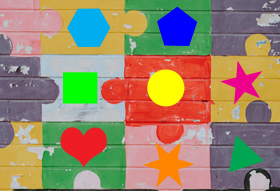
DIY foam puzzles

The number of us getting involved with DIY projects is on the rise, and these can be both big and small activities. During the lockdown, DIY and other arts and crafts projects have been popular with both parents and children.
As foam is an incredibly versatile material, it is suitable for a range of children’s crafting activities. For example, not only can foam be a useful component in felt crafting activities, but it can also be an easy crafting material itself. A popular activity undertaken by parents and children is the creation of foam-based puzzles, which can be in the form of 3D block shapes or 2D flat pieces. These are typically popular as a home-based or garden activity.
If you would like a puzzle that will keep your young child entertained while on the go, you may consider making a small 2D foam puzzle termed a ‘busy bag’ puzzle. The aim of the puzzle is pretty self-explanatory – it is small and lightweight enough to fit inside a small zip bag and suitable to be transported wherever you please. To create a foam puzzle, select your flat sheet foam of choice. To keep it as compact as possible, we’d recommend a sheet of 10-15mm thick. Being slightly thicker also makes it easier for little hands to grasp the pieces!

Plastazote closed-cell polyethylene foam is ideal for this project as it is both lightweight and waterproof. It is also available in an array of bright colours.
Step 1: Take your foam sheet and draw out several shapes using a pencil. Popular and easy shapes to create are circles, squares, rectangles, triangles and stars.
Step 2: Using a small scalpel knife or craft knife, trace over your pencil markings to slowly cut out each shape. These shapes should then pop out of the flat sheet.
Step 3: Use your pencil to mark a straight line directly down the middle of each shape to ensure your cutting will be symmetrical. Proceed by using your craft knife to cut down this line, splitting each shape in half.
Step 4: It’s time to decorate, and for young children, water-based craft paint can be used to paint each piece. For your child, this is part of the fun! Let them run wild or encourage them to paint both pieces of each shape the same colour to assist them with matching up the puzzle pieces later on.
After your pieces have dried, you can insert them into a simple zip-top bag. If you’d like to make your own, take two pieces of material measuring approximately double the width of two puzzle shapes next to each other, and the height of one and a half full pieces. Stitch a simple zip to one long edge of both pieces of fabric (bearing in mind that your bag will be turned inside out, post stitching), ensuring the zip teeth match up. Next, stitch the remaining edges of your fabric together before turning the bag inside out and decorating the bag as you wish!
For more DIY craft ideas, check out the eFoam blogs here.

